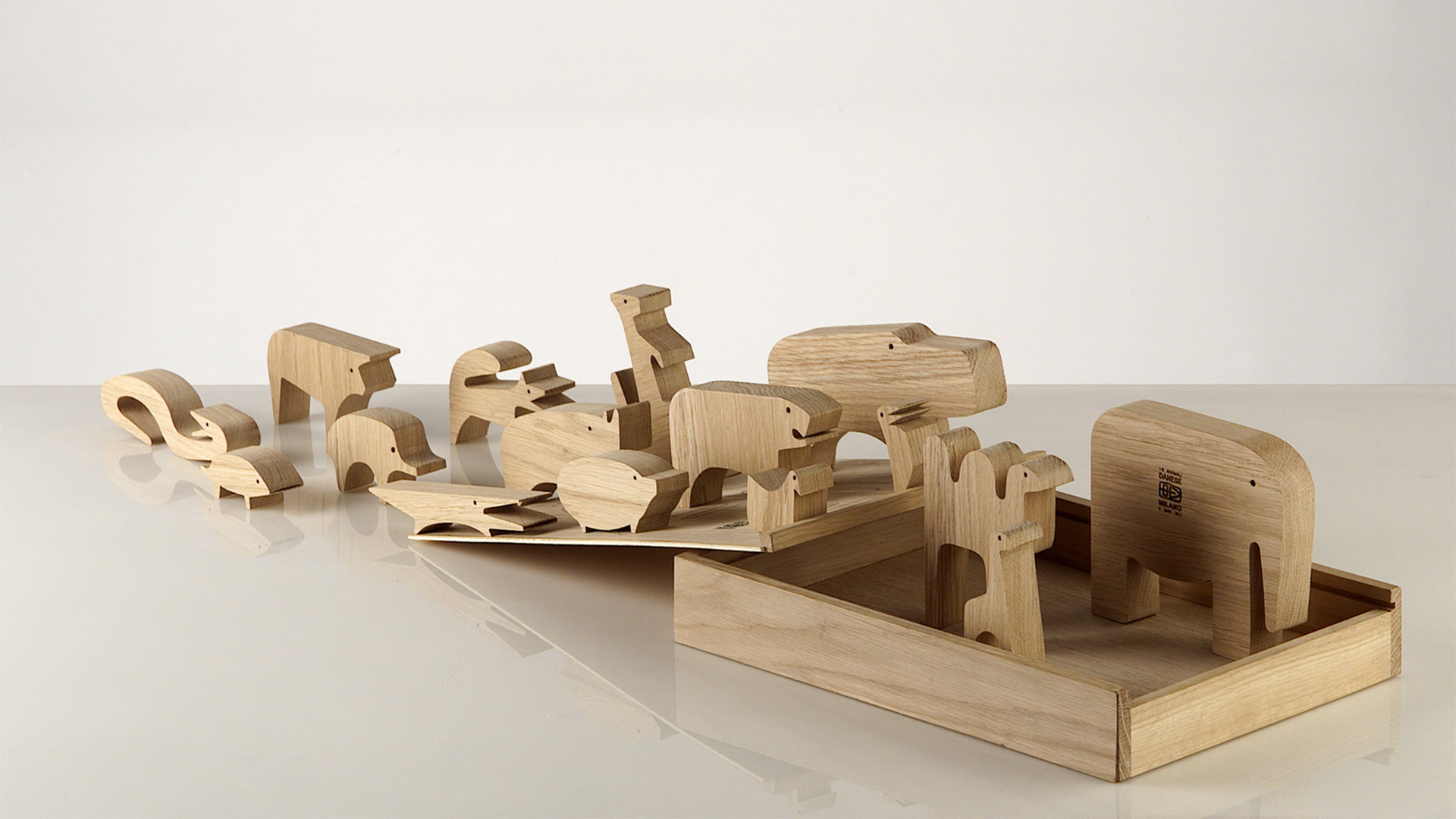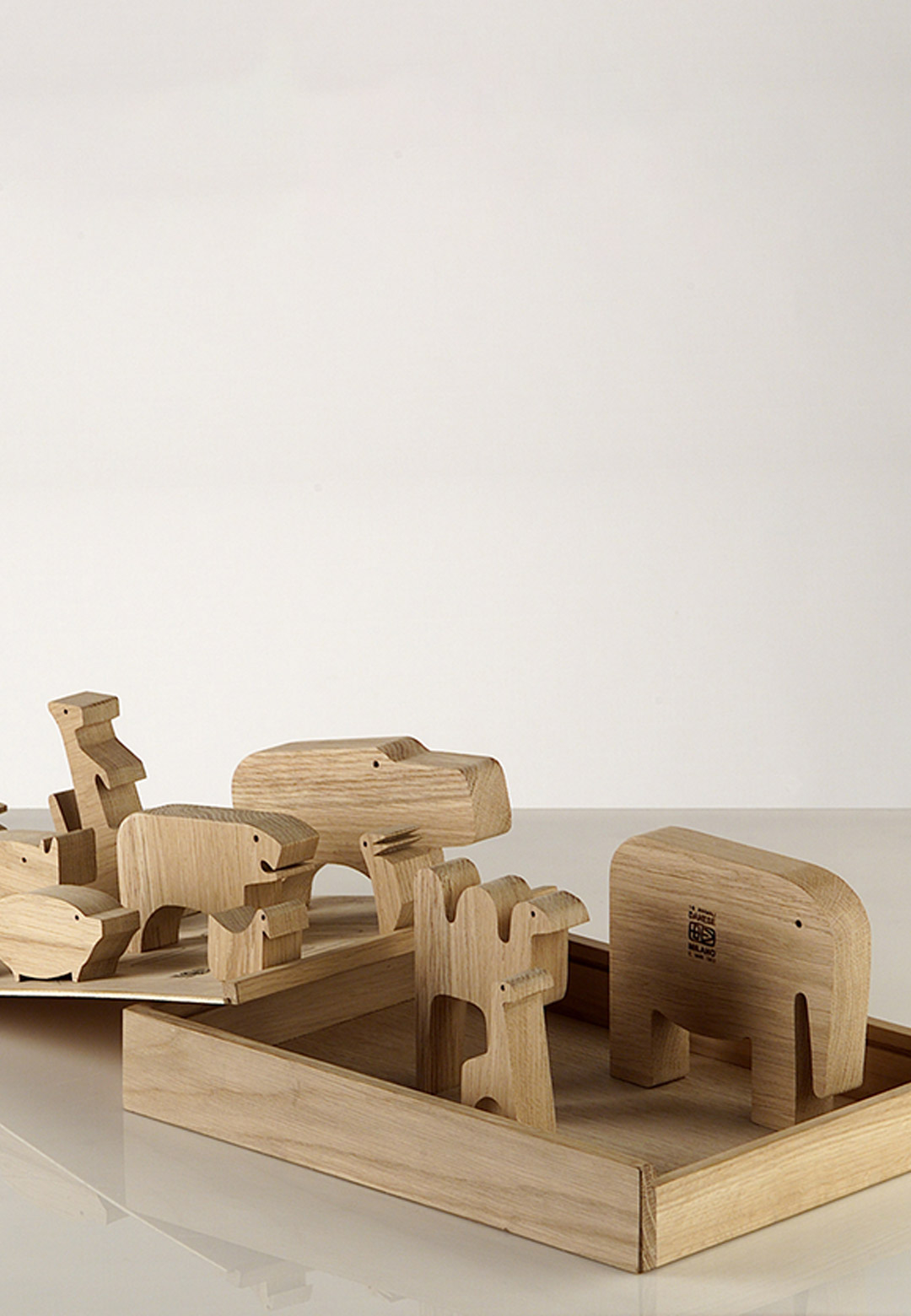Seminal Italian modernist artist, writer, product and furniture designer Enzo Mari once said, “Design is only design if it communicates knowledge.” For the Italian Master, design was intuitive, elegant, low-cost and functional. Inspirations breezed in from multiple directions, may it be the idealism of the arts and crafts movement or the simple yet profound act of playing. His 60-year career, amongst the most significant in the 20th century, his steadfast beliefs and subversive opinions, will be spotlit in the first ever UK museum exhibition devoted to him. Opening from March 29 to September 8, 2024, at the Design Museum, the large-scale retrospective exhibition will stage Mari’s prolific contributions as a designer, artist, teacher, critic and theorist.
The exhibition is co-curated by Mari’s friend and collaborator, and artistic director of Serpentine Galleries, Hans Ulrich Obrist, with Francesca Giacomelli, Mari's studio project assistant, designer, curator and researcher. With over 300 objects on display—most never showcased in the United Kingdom before—the exhibition will reach London following its debut at Triennale Milano in 2020 and its run at C-Mine in Genk, Belgium, in 2023. “This is a relevant time to revisit Mari’s work and look at the issues of sustainability and accessibility through his lens. In my many conversations with him, Mari always emphasised that design objects have to be made to last for good – design that’s there to stay, against the idea of a disposable waste of resources. This connects to his passion for transformation,” says Obrist.
Setting his career trajectory in motion in the 1950s, Mari specialised in industrial design and breathed life into an oeuvre of over 2000 works. During the span of 60 years, many timeless designs were created, and many continue to fill homes across the globe to this very day. This troupe includes his Nature Series prints of apples and pears, perpetual calendars in plastic, furniture design and kitchenware. In the 1960s, Mari also published a series of books including the renowned The Apple and the Butterfly (1969). A commitment to sustainable design—both in materiality and aesthetics—that is accessible to everyone resided at the core of his practice. The approach which was rather radical for his time is now a touchstone for many pressing issues daunting design and society; his instruction booklet Autoprogettazione (Proposal for self-design), is one such example.
Also guiding a significant share of his work was a belief that play is “the activity needed to discover one’s potential and to learn about the world.” What began as an inspiration that dawned upon him while watching his children play, went on to become some of his most recognised works—now to be highlighted in the solo-exhibition. 16 Animals is a wooden puzzle composed of the silhouettes of 16 animals such as a camel, elephant and kangaroo. Its massive popularity led to the creation of another version 16 years later, 16 Fish, that encompassed forms of different sea creatures. Other toy designs and games by Mari on display will be The fable game, and The apple and the butterfly. “Form was everything for him, but he wanted to create, through these forms, models for a different society,” Obrist shares.
Referred to as ‘design’s conscience,’ Mari’s stance was one of activism, nudging the creative community for a greater responsibility and access to knowledge. All his designs conform diligently to these tenets, akin to his installation-based works. “Enzo Mari’s uncompromising belief in the social responsibility of design resonates powerfully today. There is a huge amount we can learn from the ideas he championed since the 1950s onwards, and so we can’t wait to welcome visitors to explore his remarkable career,” notes Rachel Hajek, curator at the Design Museum.
The exhibition draws from the final show Mari curated during his lifetime—Enzo Mari: L’arte del design at the Galleria Civica d'Arte Moderna e Contemporanea in Turin, Italy, in 2008. At the upcoming show, visitors will have the opportunity to get a glimpse of the vast repertory of Mari’s work spanning art, design, exhibition and graphic design. Hundreds of his projects—from furniture and conceptual installation-based works to product design and graphics—will make an appearance alongside his children’s books and games that were intrinsic to his creative output. The expansive repository will be buttressed by archival material assembled by Giacomelli that takes a deep dive into Mari’s research process and ethos. “Mari believed that ‘ethics is the goal of every project’,” explains Giacomelli. “The aim was to have people become part of the project itself: to free the others from the passive role of consumer, because the project is not a form to contemplate or to be consumed, but an instrument of transformation that requires the active participation of a community, made aware by knowledge,” she adds.
The projects—nearly 2000 of them—are displayed chronologically without pigeonholing based on disciplines, media, or types of research. In the show, viewers will also encounter a number of tributes from international contemporary artists who take cues from Mari’s legacy, translating it into site-specific installations and new, specially commissioned works. These pieces—by Dominique Gonzalez-Foerster, Mimmo Jodice, Dozie Kanu, Adrian Paci, Barbara Stauffacher Solomon, Rirkrit Tiravanija, Nanda Vigo, Danh Vō and Virgil Abloh—make up the final section of the exhibition. A series of video interviews by Obrist inject into the ambience Mari’s constant ethical tensions. In a first for the Design Museum, the exhibition will be accompanied by a display on the museum’s balcony curated by Esme Hawes.
Tributes and gratitude will pervade the display titled Grazie Enzo: Contemporary Responses to Enzo Mari, set to open on the same day as the exhibition. In this segment, thirteen London-based contemporary designers will display select pieces of their work influenced by Mari’s philosophy. The designers are Jasper Morrison, Studiomama, Martino Gamper, Industrial Facility, Andu Masebo, Michael Marriott, Special Projects, Jaclyn Papparlardo, A Practice for Everyday Life, Rio Kobayashi, Sound Advice, Livia Lauber and StudyOPortable. Speaking about the retrospective, and its purpose, Giacomelli concludes, “His research are allegorical fragments of a single project, to which Mari has dedicated his life, in the hope of ‘transforming the world.’ Now we have the task to preserve his legacy, made of instruments of knowledge, and try to create a new world.”






 Sign in with email
Sign in with email










What do you think?